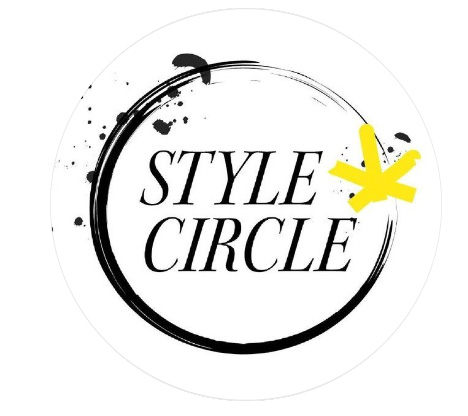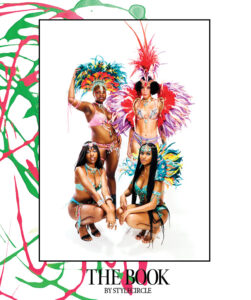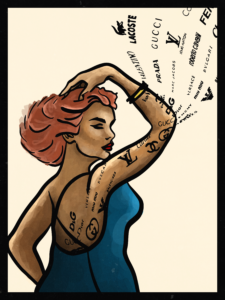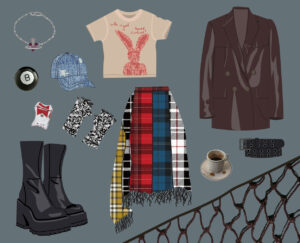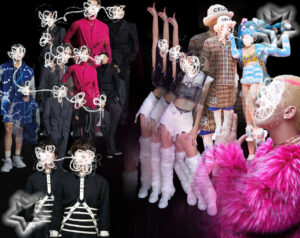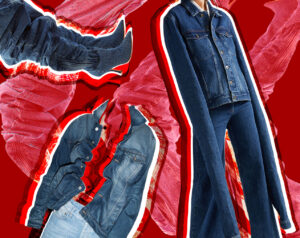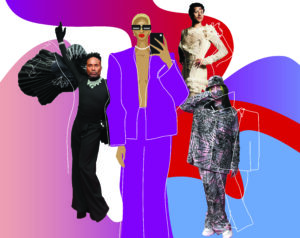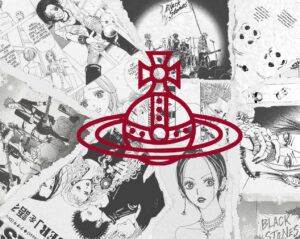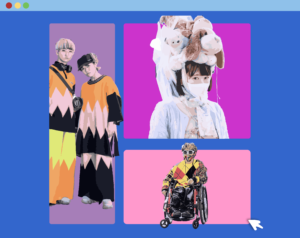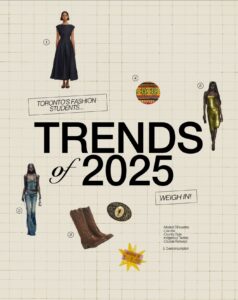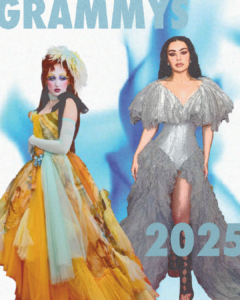AUTHOR: Gabrielle Rogozynski
COPY EDITOR: Shaye-Love Salcedo
GRAPHIC DESIGNER: Ria Bailey
Core trends leave little room for individuality—and a whole lot of waste in their wake.
Have you ever scrolled through TikTok and suddenly felt the urge to dress like a mob wife? Or maybe a ballerina? One moment, an aesthetic is taking over our feeds; the next, it fades into obscurity, dictating what is “in” and “out” at a dizzying pace.
The internet has completely disrupted the traditional fashion system. Historically, trends evolved gradually—first appearing on runways, then trickling into pop culture, and eventually making their way into everyday wardrobes. Today, trends emerge on social media, particularly TikTok, where just about anyone can go viral. A single viral moment can propel an aesthetic or even a specific item into mainstream popularity overnight. However, these trends tend to die out almost as fast as they surfaced, creating what is known as a micro-trend.
In recent years, you’ve likely encountered some bizarre fashion terminology—“old money aesthetic,” “tomato girl summer,” “mermaidcore”—and the list goes on. These are all micro trends that fall under the category of “core” trends: viral fashion aesthetics defined by a highly specific, curated look.
Unlike fashion subcultures such as punk, which are rooted in collective interests like music or activism and allow for broad interpretations of dress, core trends are rigid. They consist of specific items worn in specific ways, often from specific brands, and generally lack deeper cultural significance—making them fleeting. These “cores” are niche to the internet, existing primarily as content to satisfy an algorithm. Think about it: you rarely see a full “core” look on the streets as they are impractical and do not translate to everyday wear.
Dressing head-to-toe in one of these cores can feel like wearing a costume—reminiscent of a starter pack meme. If you are constantly zipping in and out of a costume there is little opportunity to cultivate a personal style. These trends thrive on conformity, stifling personal expression. Social media only amplifies this, creating immense pressure to chase the latest “core” in order to feel fashionable.
TikTok is the breeding ground for micro-trends. The algorithm’s hyper-visibility accelerates their popularity, allowing content to reach millions of users all over the globe within a matter of hours. But this same exposure also accelerates their decline, as they become overexposed and quickly lose their appeal. This endless loop, combined with the dominance of short-form content, has shortened attention spans and increased our craving for novelty, shaping how we consume both media and fashion. The constant influx of trends creates a sense of urgency to keep up, pressuring consumers to buy into them—especially younger users seeking validation through likes and engagement.
One of the biggest issues with core trends is their contribution to fashion’s waste problem. The rapid turnover of styles encourages overconsumption and discourages investment in timeless pieces, leaving consumers’ closets full of clothes that feel outdated before they have even been worn in. Fast fashion brands both thrive off of this cycle and enable it, mass-producing trend-based pieces that are cheap and destined for landfills.
Micro-trends have reshaped how we perceive and engage with fashion. While they may offer a sense of belonging and instant validation, they ultimately stifle personal style and contribute to the growing problem of overconsumption. To break free from the trap of core trends, stepping back from social media can help. It’s hard to figure out what you truly like when you are constantly bombarded with other people’s opinions. This doesn’t mean you have to avoid trends altogether, experimenting with new styles and having fun with fashion is still important. But perhaps the key is to sit on something before committing or to take elements you like from a core and integrate them into your existing wardrobe.
